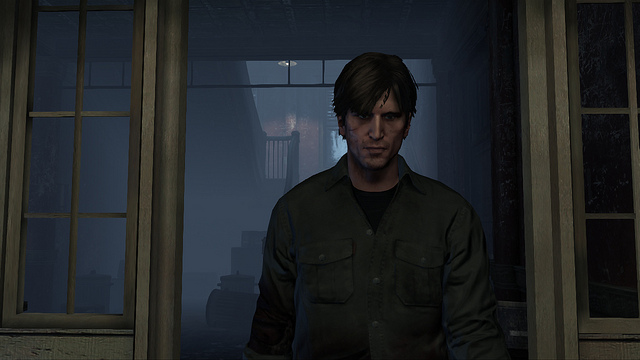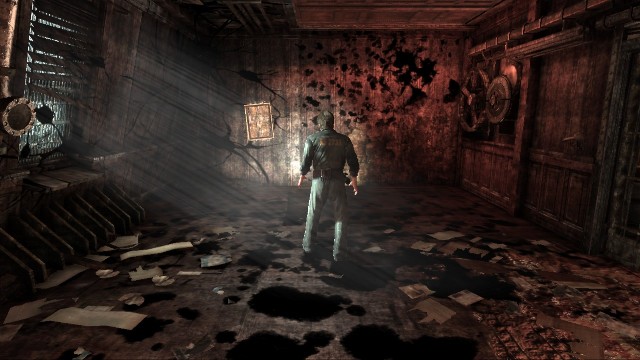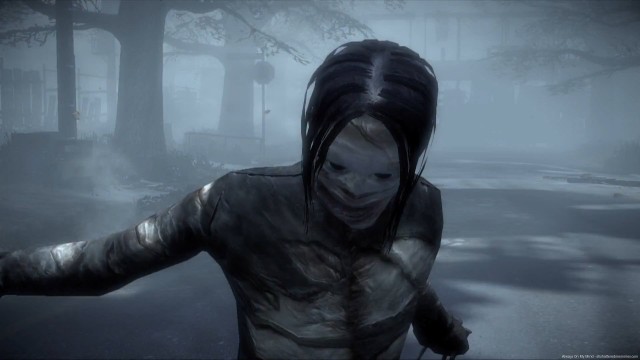Silent Hill: Downpour Review
 Game: Silent Hill: Downpour
Game: Silent Hill: Downpour
Developer: Vatra Games
Publisher: Konami Digital Entertainment
Available on: Xbox 360 & PlayStation 3 (Reviewed on PlayStation 3)
Since a merry heyday aboard the good ship PlayStation 2, the Silent Hill series has experienced a troubled middle age. This is bizarrely due to the incredible acclaim heaped upon Silent Hill 2, which was not only hailed as a classic of the survival horror genre, but also one of the scariest games ever and an artistic masterpiece. With its masterful use of psychological imagery, that game managed to meld standard survival horror tropes (limited draw distances, awkward controls, juddering zombies) with a Freudian nightmare of a plot about sexual frustration, and though good for gaming as a whole, has arguably paralysed the series’ development.
Its Moby Dick-like antagonist, the inscrutable Pyramid Head, made embarrassing cameos in Silent Hill Homecoming and the limp movie adaptation, and it seemed as if the series was doomed to spend the rest of its life paying homage to its one true glory.
Consequently, Silent Hill: Downpour is encouraging because it actually tries to do something different. The foggy town of Silent Hill, with its sticky denizens, still takes a leading role, but it eschews the murky familiar angst of earlier games for a story about an escaped convict and the truth behind his crime. Also new is the rain (alluded to in the title, observant members of the GodisaGeek readership), which shifts the meteorological focus away from said fog for the first time in over a decade.
STORY: Our hero…or at least the protagonist, is Murphy Pendleton, who is almost identical to Trent Reznor. He’s in prison for a non-specified crime, though juddery flashback cutscenes give you a pretty good idea what happened. The game starts in a disturbing fashion, with Trent Murphy, being let loose in the prison showers (whahey!) with one of the ugliest video game characters you will ever have seen. The scene is pretty unpleasant, and I like Vatra Games’ decision to allude to the menace of the rain with the menace of the trickling water in the prison showers. It’s a nice touch.

After this troubling insight into Murphy’s motivations, he’s cuffed and loaded onto a prison bus along with some other prisoners (who all look like rejects from 1997 Michael Bay classic Con Air) and a humourless, yet foxy, prison guard who keeps telling them all to “shut the f*** up”. Things don’t go according to plan, and an inconvenient storm sends the bus hurtling over the cliff, destroying Murphy’s cuffs in the process.
The game truly starts in a forest clearing on the outskirts of Silent Hill, and for series veterans, it’s business as usual, at least for the moment. Though it’s taken on a few guises over the last few years, Silent Hill has always been pretty much the same: a damp, mouldy, slice of small-town Middle America abandoned but for a few unexplained characters who all seem to know more than they’re letting on. Still, each version of the town is slightly different, and Downpour’s is like a cross between Twin Peaks and one of Stephen King’s Maine outposts, all towering pines and waterfalls. An early sequence in a tourist attraction set in a gorge is perhaps too pretty to be scary, but at least it has its own identity, as does this iteration’s version of Silent Hill’s Otherworld, an Escher-like maze of shifting corridors and melting walls; but we’re getting ahead of ourselves.
It’s difficult to say more without spoiling the plot, but since the protagonist is a convict whose crime isn’t revealed, you can be pretty certain that the reason for his incarceration will feature pretty heavily in the storyline. The overall delivery is fairly standard, though the game does a nice line in moral ambiguity. At several points, you’re given the option of responding to a dilemma in one of two ways. Though your decision tends not to have the outcome you would expect (which is frustrating at the time), it does mean that you get some say in the kind of person “your” Murphy is, so later scenes take on an entirely different meaning depending on the choices you make.
Although Murphy’s story lies at the center of Silent Hill: Downpour, Vatra Games have put a lot of effort into the game’s sidequests, and it’s much appreciated. There are a huge amount throughout the game, and while some are better than others (a tiresome bank vault raid requires you to dispatch a certain number of monsters in exchange for medkits), for the most part, they’re thoughtfully executed, well-narrated and make good use of newspaper clippings and the detritus of troubled lives, which is exactly what the Silent Hill aficionado is after.

GRAPHICS: Since Silent Hill: Downpour is all about the rain, it makes sense that fog has taken a back seat. It’s a heavy mist rather than a tangible pea-souper, but that’s made up for by the kind of digital rain that makes you feel cold after a few hours of play. It’s important that you begin to feel an aversion for the rain, because it alerts you to the increasing aggression of the monsters, and is a sign that you should take refuge in a building until it abates.
The rest of the graphics are fairly pedestrian. Silent Hill has always been more about atmosphere than snazzy graphics (rumour has it that the series’ distinctive fog was created to hide the original’s minimal draw distances) and Downpour continues this proud tradition by being resolutely ordinary in the presentation department. However, this honestly doesn’t matter and if you want fancy graphics, you’re playing the wrong game.
SOUND: The same four sound effects that have signaled object pickup and menu navigation for the last decade are still in place, which is all very nice, but more interesting is Downpour’s use of rock and country music, which yet again bring to mind the oeuvre of Stephen King. A gameplay trope that develops into a plot device is a radio station that’s always on whenever you walk into a room with a radio, which happens approximately once every twenty minutes. Although it would be slightly more immersive if the radios weren’t so evenly spaced and completely identical, the music gives the game a unique identity amongst its ethereal, grungy brothers.
GAMEPLAY: So far so good, right? Well, yes, but that’s only because Silent Hill: Downpour’s only real problem is the fact that the gameplay is pretty poor. Seeing as it’s a video game, this is something of a problem.
The main issue is combat, the first problem with which is the enemies. Lacking both the symbolic mystery and the gruesome body horror that made the shambling zombies of earlier games so disturbing, Silent Hill: Downpour’s monsters are painfully generic. There’s the screaming banshee, the muscular brute, the faceless wall-scrambler and the token invisible contortionist.

Though a couple more varieties surface later in the game, that’s your lot for the first eight hours or so. They all run at you in precisely the same way, and though you can choose whether to engage them or evade them, your tactics never vary depending on the monster, which means you quickly slip into a routine. This is a serious problem for a survival horror game, which relies on unpredictability to deliver thrills.
What’s worse, the beasties are all defeated in pretty much the same way, that is by repeatedly bludgeoning them with an object. Therein lies the second major problem. The whole point of survival horror combat is that it is deliberately awkward and unintuitive, because it’s supposed to deliver the feeling of being adrift in a hostile universe where absolutely nothing is under your control, and the monsters you encounter are a serious threat. Fighting in these games is supposed to be neither pleasurable nor satisfying. It’s not meant to be Bayonetta, and you’re supposed to emit a sign of relief upon defeating an enemy, not a victorious air-punch. Why? So that you and your bladder learn to fear enemies, rather than simply look forward to picking them off.
Painful though this may be, it’s all in the interest of immersion, which is why the combat in Downpour is such a failure. You see, Murphy can use almost any item within his grasp to beat away at the pulpy flesh of a monster, and yet we’re supposed to believe that absolutely everything he touches, bricks, crowbars, fire extinguishers, falls apart after three hits. You can’t even suspend disbelief and convince yourself that Silent Hill somehow erodes every object within its bounds, because there are hundreds of buildings barricaded by decaying boards that you can’t even dislodge with a sledge hammer. To balance the combat, the level designers have littered every horizontal surface with wrenches, pipes and open toolboxes, which not only manages to destroy the sense of peril instilled by making the weapons so fragile (since you are only ever about 2 seconds’ walk away from another one), but also asks us to believe that the town of Silent Hill was populated by several thousand absent-minded plumbers.
Problems are compounded even further by the fact that the button to pick up or change a weapon is the same as the button you use to pick up or interact with a vital puzzle component, which is unbelievably frustrating. Even if you turn on object markers and button prompts (though kudos go to Vatra for letting us turn them off), you’re still likely to spend a great deal of the game foraging around on the floor looking for the ice pick you dropped in order to pick up a bottle you thought was a keycard.

This failure to make combat either fun or threatening is a serious problem, one that’s compounded by the fact that instead of the traditional Silent Hill protagonist, i.e. a normal person, we’re playing as a six-foot beefcake with a chiselled jaw and a striking resemblance to a man who spent the nineties willingly writhing about in chains. All this makes it rather difficult to become truly immersed in Murphy’s story, which is a shame, because it’s a solid one.
Puzzles fare rather better, though there’s nothing especially surprising. Like previous games in the series, there are separate difficulty sliders for puzzles and combat, and the tricky puzzles provide just about the right level of challenge. If you don’t like trekking back and forth through dark environments trying to find a hidden code, you’re playing the wrong game, but if you do, you’ll find plenty of satisfaction in the various riddle-solving, shape-matching, keycard-finding fare on offer here.
LONGEVITY: The basic game will take between 12 and 20 hours, depending on the difficulty settings you chose. There are multiple endings (of course!), and if you can be bothered to drag yourself through the miserable combat once, the chances are that you won’t mind doing the same thing again for the sake of another outcome.
VERDICT: It’s a real shame that a gameplay mechanic so crucial to immersion is neglected here, because Silent Hill Downpour could have been really good. As it is, you spend a lot of time messing about with what is effectively a token gesture towards generic convention that only serves to make what should be a scary game into a frequently tedious one. If you can see past the combat, the game has plenty to recommend it, even though it never approaches the dark heart that we’re all hoping will emerge again from the little town of Silent Hill.





